5-17-20
As Far as I Can Walk: An Epic Poem for the Screen
By Diane Sippl
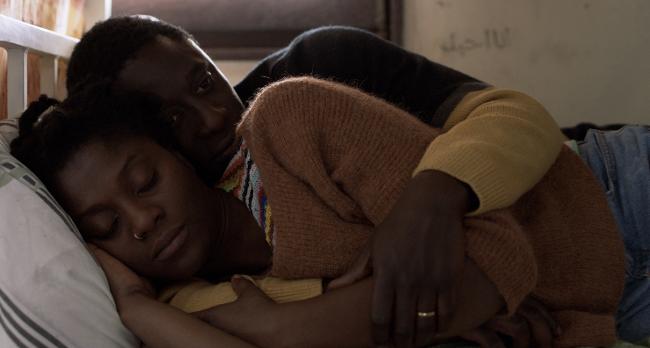
At the heart of our film is something very intimate. A love story. A stubborn, unusual, and beautiful love story. A story of a man who will go against the rules of society and risk everything for love.
Director and Co-Writer Stefan Arsenijević
When Strahinya and his wife, Ababuo, left Ghana at the beginning of the migrant crisis, they managed to reach Germany but were deported back to Belgrade. Serbia might not be Germany, but Strahinya does his best to begin a new life, working hard to secure asylum. But the process is lengthy, and Ababuo, who passionately wants to become an actress in London, feels unfulfilled in their present life. A new group of Syrian refugees arrives, en route to Western Europe. Among them is Ali, a charismatic left-wing activist. Ababuo mocks him at first, but the next morning she leaves Serbia with him without telling Strahinya. He then sets off along the Balkan migrant route for completely different reasons than anyone else has: for love. As Far as I Can Walk is a re-imagining of the medieval Serbian epic poem, Banovich Strahinya in which contemporary African migrants take the place of Serbian national heroes.
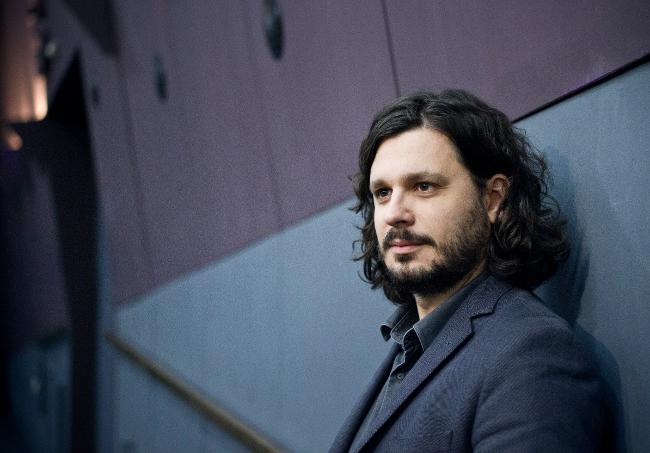
To this date, As Far as I Can Walk has competed in at least 21 film festivals world-wide and won 16 awards—five at the Karlovy Vary International Film Festival where it premiered (including the Grand Prix Crystal Globe and the Best Actor Award) and four at the South East European Film Festival in Los Angeles this month (including the Audience Award and an Honorable Mention for Best Feature Film).
Its writer and director, Stefan Arsenijević, was born in Belgrade (Serbia) in 1977. He graduated in Film and TV Directing from the Faculty of Dramatic Arts in Belgrade, where he now teaches film directing at the master’s level. His short film "(A)torsion" (2003) won over 30 national and international awards, including the Golden Bear at the Berlinale, the European Film Academy Award, and the Oscar nomination. His first feature, Love and Other Crimes, premiered at the Berlinale Panorama Special in 2008 and won several awards at international festivals. Stefan Arsenijević has been Program Manager of the Goethe Institute’s professional training program for Southeast European film directors, FIRST FILMS FIRST, since 2015, and he is a member of the European Film Academy. As Far as I Can Walk is his second feature film.
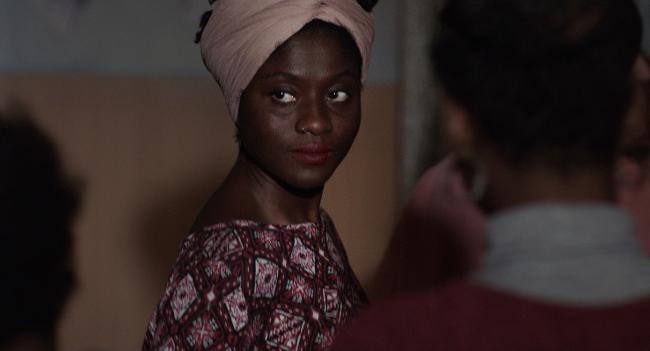
KINOCaviar Your film encompasses refugees from various countries: Mali (the protagonist’s land of birth), Ghana (from which he and his wife departed), Syria…. How did you choose to take up this topic for your second feature film? How did you research it?
Stefan Arsenijevic My hometown, Belgrade, was an important point on the Balkan migrant route during the migrant crisis a few years ago. It was the biggest refugee crisis after World War II and it was happening right in front of me. I was encountering these lost, exhausted, scared people. Thousands of new migrants were arriving every day. A lot of them were educated, middle class people. Having experienced war and poverty myself during the Yugoslavian wars in the 90s, I could easily identify with them. I felt I needed to do something. The media was reporting mostly numbers and statistics. So I started talking with migrants, hearing their stories.
Then my two good friends and co-writers joined me, writer-director Bojan Vuletic with whom I frequently collaborate and French writer Nicolas Ducray. For a few months we just talked with migrants. It was a moving, current, epic story, but we needed the right angle in order to approach it. It all fell into place when we decided to combine the migrant stories we heard with a traditional Serbian medieval poem. National identity and national heritage are touchy subjects in my country. So an idea occurred to me: what if I replaced Serbian national heroes with contemporary African migrants? Instantly that idea gave rise to many implicit, interesting questions about tradition and identity. I also had a feeling that by combining these two quite different worlds, we could end up understanding both of them better.
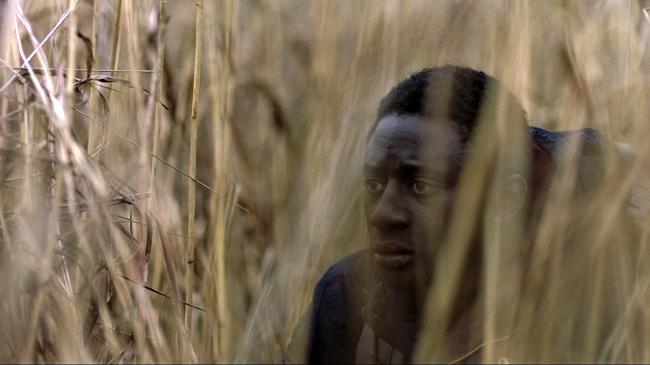
KC “Let her go! She’s not my wife. You have the wrong person. My wife doesn’t look anything like her…. You think I don’t know my own wife?”
At a key point in the film, the protagonist, Strahinya, intervenes with these lines. It’s the most heroic bit of dialogue I’ve heard in a long time, ambiguously tied to a strong heroic action. The resonance of these few words is rich and complex. Is the hero generous (by helping Ababuo fulfill her wishes)? Jealous (of the other man she has chosen for help)? Ingenuous (her choice means he really feels he doesn’t know her any more)? Furious (that he has been left)? Call it love, in any case—the kind of love expressed with the eloquence of an Othello under related but somewhat opposite circumstances.
Does the course of events in your source material, the Serbian folk epic, evolve in the same way that you develop the conflict in your screenplay? (In this case, I’m referring to the love story.)
SA First of all, thank you for these kind words. The course of events is pretty much the same in the poem as in the film, except for the very ending. The end of the original poem includes dueling with horses, swords and, at the very end, bare hands between two male characters. Very medieval. But in its essence, the poem is about complex love and empathy. However, it has the morality of the Middle Ages. We wanted to make a current story, a story that is in every aspect relevant and intriguing today.
So we updated a lot of things, at the same time trying to stay true to the original spirit. We shifted the focus on the female character, Ababuo, and her choices. We made her stronger and more active. And we felt that the resolution of the story should come from her and Strahinya’s relationship, rather than from two men dueling for her. The poem itself was way ahead of its time; it dealt progressively with female infidelity—with compassion and a certain empathy. But we needed to go further. We wanted the character and the conflict to resonate with today’s world.
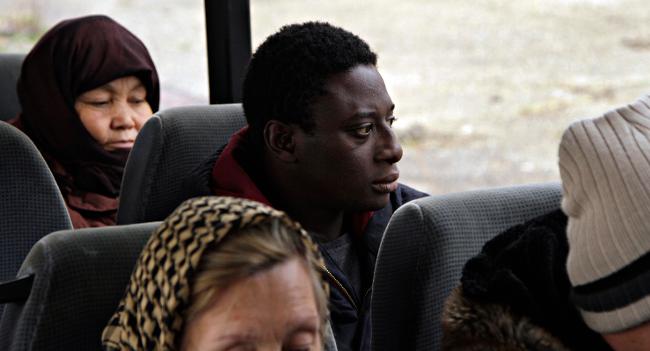
KC Overall, the verbal text of the epic poem, spoken in a tender but valorous woman’s voice, seems to be ironically juxtaposed with what we see on the screen. For example, for a “galloping horse” in the voice-over narration, we see a man on foot on the screen; for “lush fields and hills,” we see a gray no-man’s-land; for a “golden palace” we see the ruins of a mansion. Was it important to you to counter the luster of the epic with the devastation of today’s people displaced on the land, as if to invite us to wonder how “nobility” and “dignity” might not always be recognized by us as interior traits that have been repressed by exterior forces?
SA Absolutely. These people today may not have the looks of classical Western noble heroes, they are no knights on white horses, but they substantially have the real nobility and courage. Just think of the fascinating journeys they are taking, for thousands of miles, over land and sea, often on foot. Think of all the life-threatening risks they are consciously willing to take, for the hope of a better life for them and their families. These are epic endeavors. If you ask me, these are today’s equivalent of epic journeys of medieval knights. And we tried to treat them that way in the film, to give them dignity and nobility. Often, for good reasons, in portraying migrants, films limit their identity to that of victims. We really wanted them to be more than just that in our film. We tried to portray them as complex, modern heroes.
During my extensive research for the film, I got to know a lot of migrants. Some of them are truly fascinating characters. Their journeys and fights are not just fights for staying alive, being safe. They are often fights for achieving their full human and creative potential. It’s not just about physical survival. That’s the story of Ababuo in our film. As she says at one point: “I need at least an illusion of something bigger.”
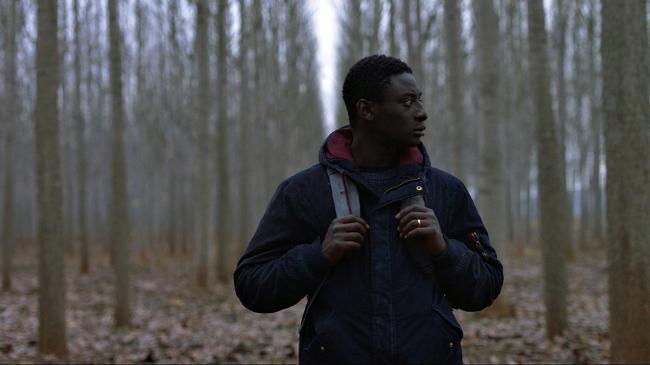
KC As Far as I Can Walk plays like a true tragedy in the classic sense of the word: a person of high stature takes a tragic fall owing to his own hubris, but his fate is all the while determined by irreversible forces larger than the self, irrational and immoral as they may be. Our hero (a celebrated soccer player) does battle in an existential quest (his wife’s love in a new land): he can’t win, but he assumes responsibility as an individual (for his failure to see her as a full person) by freely making a conscious choice (to save her from deportation). We identify with him heart and soul, and thus experience a catharsis that may bring lasting impact for us.
Is all this the intent and truth of the original epic, or did you endow it with your own thrust? Did you adapt its structure or meaning to fit our own times and issues (social, economic, political, moral)? Or did you frame your film within the old epic to suggest that every era suffers these conflicts? What is universal and what is specific? Does it matter that there have always been flights of refugees? Do their plights have more in common than not? What’s new?
SA We definitely had to change the ending in order to be truthful both to the spirit of the original poem and modern times. In the poem, the hero fights for his wife, takes her home, and forgives her for her infidelity. Again, that was very open-minded in the Middle Ages, but it obviously doesn’t work nowadays. He has to let her go, in order to show her his love. The inspiration for that scene at the end actually comes from another film about refugees, directed by a Hungarian-born director—Casablanca.
So, yes, the stories keep repeating through time. And unfortunately, we, as humanity, don’t learn much from them. It’s important for me to state that, especially since I had my own experience of war in Yugoslavia while growing up. It’s beyond my understanding how little we learn from the past.
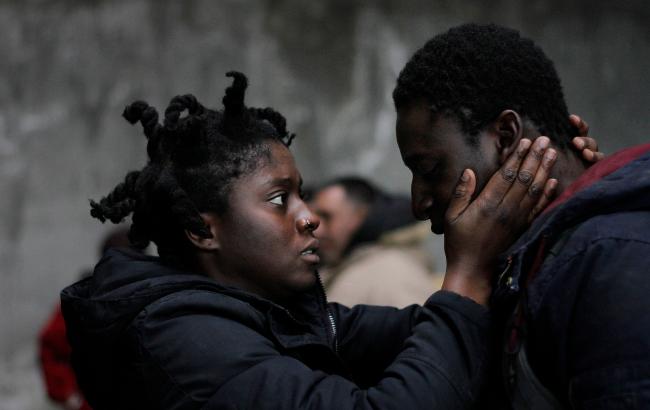
KC Suspense-wise, much of the film focuses on the figure of the lone seeker who is at once an outsider and a sought-after moving target: he could be Oedipus roaming in the Greek hills or Jim on Huck Finn’s raft, each character with his own dire drives. We internalize the fear of the runaway, on foot in fields and forests and even in cars and trains. And this one uses no less cunning than the others. He learns the local (Serbian) language; he studies the international refugee system. Highly visible as he is, he knows how to don a momentary guise and dodge the hurdles. Does he stand a chance of reaching his goals as a promising athlete and informed citizen? How long can his perseverance hold out?
SA The inspiration for the main character was one of the migrants I met during our research for the film. His name is Ibrahim Ishaq and he is from Ghana. Unlike most of the migrants who are passing through our country on the way to the more prosperous West Europe, he wanted to stay in Serbia and start a new life here. He wanted to be a professional soccer player and he trained with one local club, but he can’t play official matches until he gets asylum. The process for asylum is lengthy, so he learned our language, volunteered for the Red Cross, and did everything in his power to get better odds for being granted asylum. I thought: what if the new version of Serbian national hero is someone like him?
So we pretty much based the main character on him. I met him again in February this year, at our premiere in Serbia. Unfortunately, he never succeeded in getting asylum. In the meantime, he got a bit too old to be a professional soccer player. He moved to Nis, the second biggest town in Serbia, and enrolled in a degree program in physical education. He’s in the last year of studying, staying in our country on a student visa. In this particular case, unfortunately the system was hard to beat. There are very few chances for people in his place. But he is still fighting and finding creative new ways to deal with his situation. I admire him so much.
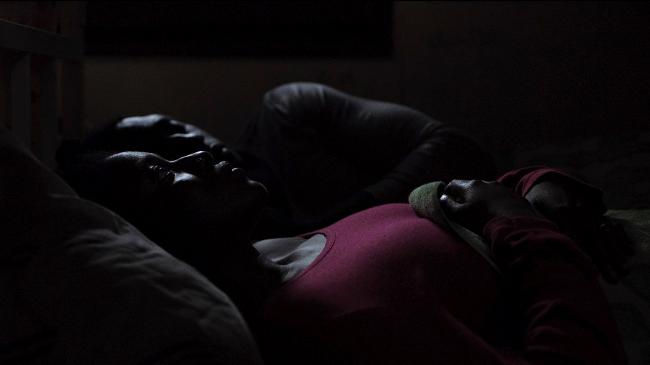
KC Your main actors are excellent, so charismatic—where did you find them? Your cast is huge. Was it difficult to manage so many “extras” while drawing such fine performances from the lead actors?
SA Thank you, I am very proud of the acting. Actually, directing actors is the part that excites me most in the process of filmmaking. We had three casting directors—two in Europe and one in Africa—searching for the main actors for almost a year.
I was so happy when I finally saw a video casting of a French actor with Malian roots, Ibrahim Koma. He is so expressive and emotionally powerful with very little means. Sometimes with just one look, he is able to tell you a lot about his character’s inner life. I immediately felt he was our lead. Ibrahim is a super talented and dedicated actor. He moved to Belgrade a few months before the shoot in order to learn the language, absorb the culture, talk to migrants, and discuss the story and characters with me. So, when production started—and shooting the film was quite demanding physically—we knew each other very well, we knew what we were aiming for, and we worked as a team. He’s a really exceptional actor and person.
Nancy Mensah-Offei was born in Ghana and then moved to Austria as a teenager. She works a lot in theatre. This is her first leading role in film. For the role of Ababuo we needed someone who would make a strong and lasting impression on the audience in a very limited time at the beginning of the film, since she then disappears until the very end. Nancy is a strong personality, a force of nature, extremely smart. She was just perfect for the part.
And then we had Maxim Khalil as the third in the love triangle. He is a Syrian actor who, due to the war in his country, had to flee and now lives in France. So he has a very recent refugee experience. Maxim is actually a star in the Arabic speaking part of the world.
So my great challenge, as well as pleasure, was to direct these fine actors from different countries, different backgrounds, different acting schools. It was very exciting and creatively enriching.
For the extras, we used real migrants from several refugee camps in Serbia. They brought the authenticity and they were always on set to tell us if we were doing everything right. Even though the film is fiction, we wanted it to be as close to reality as possible.
Shooting the film was definitely not easy. But I was blessed with a truly talented and wonderful cast and crew who felt it was an important film to make, so they were always ready to go an extra mile in order to achieve it.
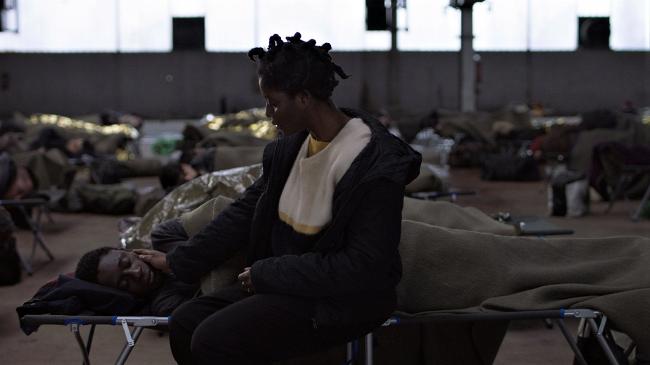
KC By the way, Vera Mijojlic, founder and director of SEEfest, told me that you couldn’t attend the festival right now because you were busy taking care of your daughter while your wife worked as a filmmaker. I see this as an uncanny comment on the husband-wife relation in the film—in a good way: the husband’s recognition of the wife’s need to use her talent and develop her profession. Did your own life inspire much of the film?
SA I think as directors, we always make films about ourselves, even if the relations of our lives to the story might not be direct. My wife, Jelena Stankovic, is a cinematographer and we were first shooting films together, then fell in love and started a family. She was the director of photography on As Far as I Can Walk. The important part of our relationship is that we both love films. For both of us, filmmaking is a passion, a calling rather than a profession. She’s at her best when she is shooting—she’s glowing. And I know she wouldn’t be happy if she would have to compromise her filmmaking.
So of course, I am supportive, as she is with me. Now that we have a four-year-old daughter, it requires a lot of balancing between family life and filmmaking. It’s important for us to have both, and it’s possible to make films and have a quality family life. It just needs a lot of planning, adapting to some unorthodox scheduling and supporting each other. We’re lucky that we are both in the same business, since filmmaking is a very specific job.
KC I noticed that the end credits acknowledge the work of five countries—Serbia, France, Luxembourg, Lithuania, and Bulgaria. Was this project difficult to put together?
It was a complex European co-production. The financial support we get from our film center in Serbia is not enough for production of a film. We needed to involve more countries and their funds to reach the budget of 1.2 million Euros (around 1.26 million dollars). There were times when it seemed like the film would never take off. But I had very supportive producers, especially Miroslav Mogorovic, with whom I’ve worked for years. He fought for the film passionately for several years.
KC As Far as I Can Walk won the top awards at the Karlovy Vary Film Festival in the Czech Republic. What has been the audience response in Europe where many countries are increasingly experiencing the flood of would-be emigres?
SA We've seen some very emotional responses. Since our world premiere in Karlovy Vary at the end of August, the film travelled to close to 30 festivals. I tried to follow it as much as I could. I was eager to meet the audiences, to talk about our film. Sensitive people react very emotionally to it everywhere.
Sometimes when they come to a film about refugees, they don’t expect a love story to be so much the focus. And the love story is what makes it easy to identify with our characters. Our main goal was to change the process of “othering” the refugees, to lead the audience to understand that they are people like us. That it could happen to us. Then the war in Ukraine started and I could feel the change in the audiences in Europe. The war came to our doors.
As Far as I Can Walk
Director: Stefan Arsenijević; Producer: Miroslav Mogorović; Screenplay: Stefan Arsenijević, Bojan Vuletić, Nicolas Ducray; Cinematographer: Jelena Stancović; Editor: Vanja Kovačević; Sound: Zoran Maksimović; Music: Martynas Bialobžeskis; Production Design: Zorana Petrov; Costumes: Carine Rando de Felice; Make-up: Sophie Garlinskas.
Cast: Ibrahim Koma, Nancy Mensah-Offei, Maxim Khalil, Rami Farah, Nebojša Dugalić.
Color, 92 min. In English and Serbian with English subtitles.